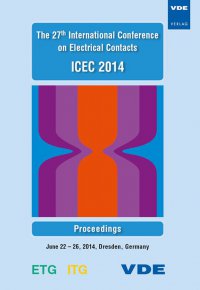Impact of the Temperature-Induced Reduction of Joint Force on the Long-Term Behavior of Contact Elements with Material-Allocated Electrical and Mechanical Function
Conference: ICEC 2014 - The 27th International Conference on Electrical Contacts
06/22/2014 - 06/26/2014 at Dresden, Deutschland
Proceedings: ICEC 2014
Pages: 6Language: englishTyp: PDF
Personal VDE Members are entitled to a 10% discount on this title
Authors:
Gatzsche, Michael; Luecke, Nils; Großmann, Steffen (Institute of Electrical Power Systems and High Voltage Engineering, Technische Universitaet Dresden, Dresden, Germany)
Ledermann, Tom; Freudiger, George (Research and Development, Multi-Contact AG, Allschwil, Switzerland)
Abstract:
High power sliding and plug-in connections are an integral part of the public power grid and various industry applications. Spring-loaded contact elements realize the electrical contact of plug and socket. This paper deals with contact elements (“Multilams”) that use different materials to meet the electrical and mechanical requirements: silver electroplated copper louvers to ensure low joint resistance and a stainless spring steel carrier strip to generate a long-term stable joint force. In most applications, the contact areas are lubricated with grease to improve tribological properties like sliding force and wear. Electrically however, the grease film represents an impurity layer. The long-term behavior of the Multilams in the complex multi-material system of a lubricated high power plug-in connection is investigated by experiments with current carrying model connectors at operating temperatures of 105 °C (highvoltage switchgear according to IEC 62271-1:2007+A1:2011) and above (custom industry applications). Dependent on temperature, different grease, recommended for use in electrical contacts, was deployed. To investigate changes in contact properties of the Multilams, regular measurement of joint force and joint resistance in combination with simulated plugging operations (separating and re-closing the model connectors) was performed. The results of the initial 4000 hours of operation are discussed.


